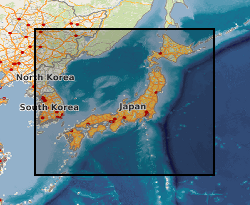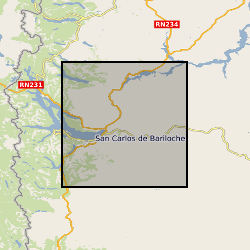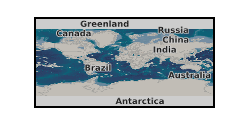Volcanic ash
Type of resources
Topics
Keywords
Contact for the resource
Provided by
Years
Formats
Representation types
Update frequencies
-

This MS Excel dataset contains tephra depth and age data from ocean drilling expeditions around Japan. IODP, ODP and DSDP shipboard core description records were examined for mentions of volcanic ash, tephra etc., according to criteria described in Mahony et al. 2014. Data are from shipboard visual core descriptions of ocean drilling expeditions located within a few hundred km of Japan. Cores without published age-depth data are not included in this dataset. The expeditions occurred between 1973 (DSDP 31) to 2013 (IODP 346). Tephra layers are dated as being deposited between 0.003-18.5 Ma. This data will be of interest to volcanologists or anyone interested in the location of volcanic ash layers within IODP cores.
-

Volcanic ash samples were collected and analysed following the 2015 eruption of Calbuco volcano, Chile. Datasets uploaded are: Calbuco2015 Probe Data - excel Calbuco2015 Locations and Grain Size – excel Calbuco Deposit Measurements grl54177-sup-0002-tables3 Published as supplement to A.R. van Eaton et al (2016) Volcanic lightning and plume behavior reveal evolving hazards during the April 2015 eruption of Calbuco volcano, Chile, Geophysical Research Letters 43 (7), 3563-3571 Electron Probe Micro Analysis Major element compositions of plagioclase, groundmass glass and melt inclusions were analysed with a JEOL JXA-8600 wavelength-dispersive electron microprobe (EMP), equipped with four spectrometers, at the Research Laboratory for Archaeology and the History of Art, University of Oxford using a defocused beam (5¿m), low beam current (4nA) and accelerating voltage of 15 kV. Full analytical conditions are detailed in Rawson et al. (2015). Secondary standards used were Gor128-G and StHs/80-G for glass (Jochum et al., 2006). Glass (melt inclusion and groundmass) totals were normalised to 100% to account for variable secondary hydration. Stoichiometry and charge balancing was used to determine the amount of Fe2O3 and FeO in plagioclase. Pyroxene and magnetite grains were analysed with a defocused beam (5¿m), higher beam current (10nA), and an accelerating voltage of 15 kV. Secondary standards used were hornblende (USNM 111356), Pyrope (USNM 1143968) and ilmenite (USNM 96189; (Jarosewich et al., 1980). Stoichiometry and charge balancing was used to determine the amounts of Fe2O3 and FeO, following Droop (1987). Thickness and Grain size analysis Ash fallout thicknesses were measured in the field shortly after deposition, and samples collected for follow-up analysis of grainsize and chemical composition. Grain size analysis was conducted using a Malvern Laser Particle Sizer Mastersizer 2000 at the University of Oxford.
-

This dataset (1.5 GB) comprises SO2 emission data (SO2 camera and DOAS) of parts of the active 2013 phase from Colima, as well as Scanning electron microscope (SEM) images and microprobe data of the collected ash from explosions and lava and dome rock. These data were used in the following paper: Cassidy, M., Cole, P.D., Hicks, K.E., Varley, N.R., Peters, N., Lerner, A. 'Rapid and slow: Varying ascent rates as a mechanism for Vulcanian explosions' Earth and Planetary Science Letters. 420: 73-84. doi:10.1016/j.epsl.2015.03.025
-

The data provides a summary of volcanic ash samples collected from around Anak Krakatau, Indonesia, in August 2019, originating from the December 2018 eruption. The ash was generated in eruptions immediately following the sector collapse of Anak Krakatau. The data provides a summary of sample locations, brief information on the sample context (original notebook entries for the field sites, alongside summary stratigraphic descriptions), componentry information for selected ash samples, laser-diffraction grain-size information for the ash samples, whole rock XRF compositional analysis of selected samples, and EPMA mineral analyses from selected samples.
 BGS Data Catalogue
BGS Data Catalogue